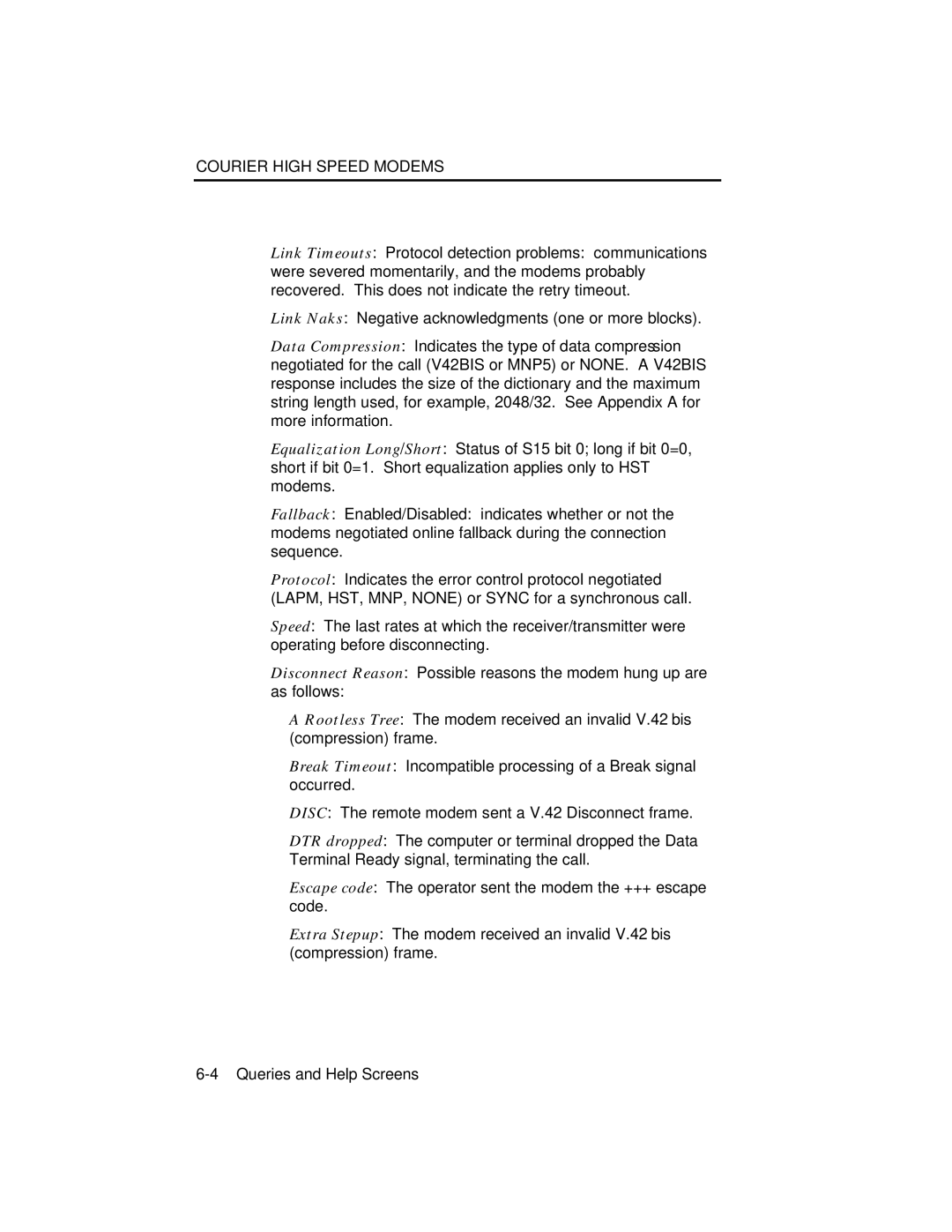COURIER HIGH SPEED MODEMS
Link Timeouts: Protocol detection problems: communications were severed momentarily, and the modems probably recovered. This does not indicate the retry timeout.
Link Naks: Negative acknowledgments (one or more blocks).
Data Compression: Indicates the type of data compression negotiated for the call (V42BIS or MNP5) or NONE. A V42BIS response includes the size of the dictionary and the maximum string length used, for example, 2048/32. See Appendix A for more information.
Equalization Long/Short: Status of S15 bit 0; long if bit 0=0, short if bit 0=1. Short equalization applies only to HST modems.
Fallback: Enabled/Disabled: indicates whether or not the modems negotiated online fallback during the connection sequence.
Protocol: Indicates the error control protocol negotiated (LAPM, HST, MNP, NONE) or SYNC for a synchronous call.
Speed: The last rates at which the receiver/transmitter were operating before disconnecting.
Disconnect Reason: Possible reasons the modem hung up are as follows:
A Rootless Tree: The modem received an invalid V.42 bis (compression) frame.
Break Timeout: Incompatible processing of a Break signal occurred.
DISC: The remote modem sent a V.42 Disconnect frame.
DTR dropped: The computer or terminal dropped the Data Terminal Ready signal, terminating the call.
Escape code: The operator sent the modem the +++ escape code.
Extra Stepup: The modem received an invalid V.42 bis (compression) frame.
